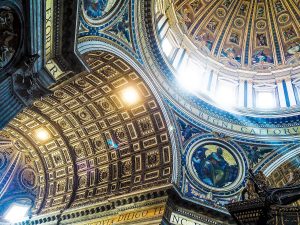Church construction in the Middle Ages started after the year 313 when Emperor Constantine made Christianity the official religion of the empire and reached its peak somewhere between 1150 and 1250. The hundred years between 1150 and 1250 was the age of great cathedrals. This time span saw the birth of Gothic-style art and architecture, both of which survived until the 1500s and even after. The Gothic era is known for its large buildings, ornate, intricate detailing and overall grandeur.
 During the ages of the great cathedral and of Gothic Art, rulers of Europe were trying to build bigger and more impressive cathedrals than those before them had built. Architects were building taller and taller structures and using rib vaults and pointed arches to make the buildings look yet bigger. One of the more famous examples of such architecture is the Cathedral of Notre Dame in Paris, built between the late 1100s and early 1200s.
During the ages of the great cathedral and of Gothic Art, rulers of Europe were trying to build bigger and more impressive cathedrals than those before them had built. Architects were building taller and taller structures and using rib vaults and pointed arches to make the buildings look yet bigger. One of the more famous examples of such architecture is the Cathedral of Notre Dame in Paris, built between the late 1100s and early 1200s.
While these buildings were works of art in themselves, they also contained a lot of art, including paintings, mosaics, and religious garment jewellery. Much of this art showed stories from the Bible and was dedicated to biblical characters.

